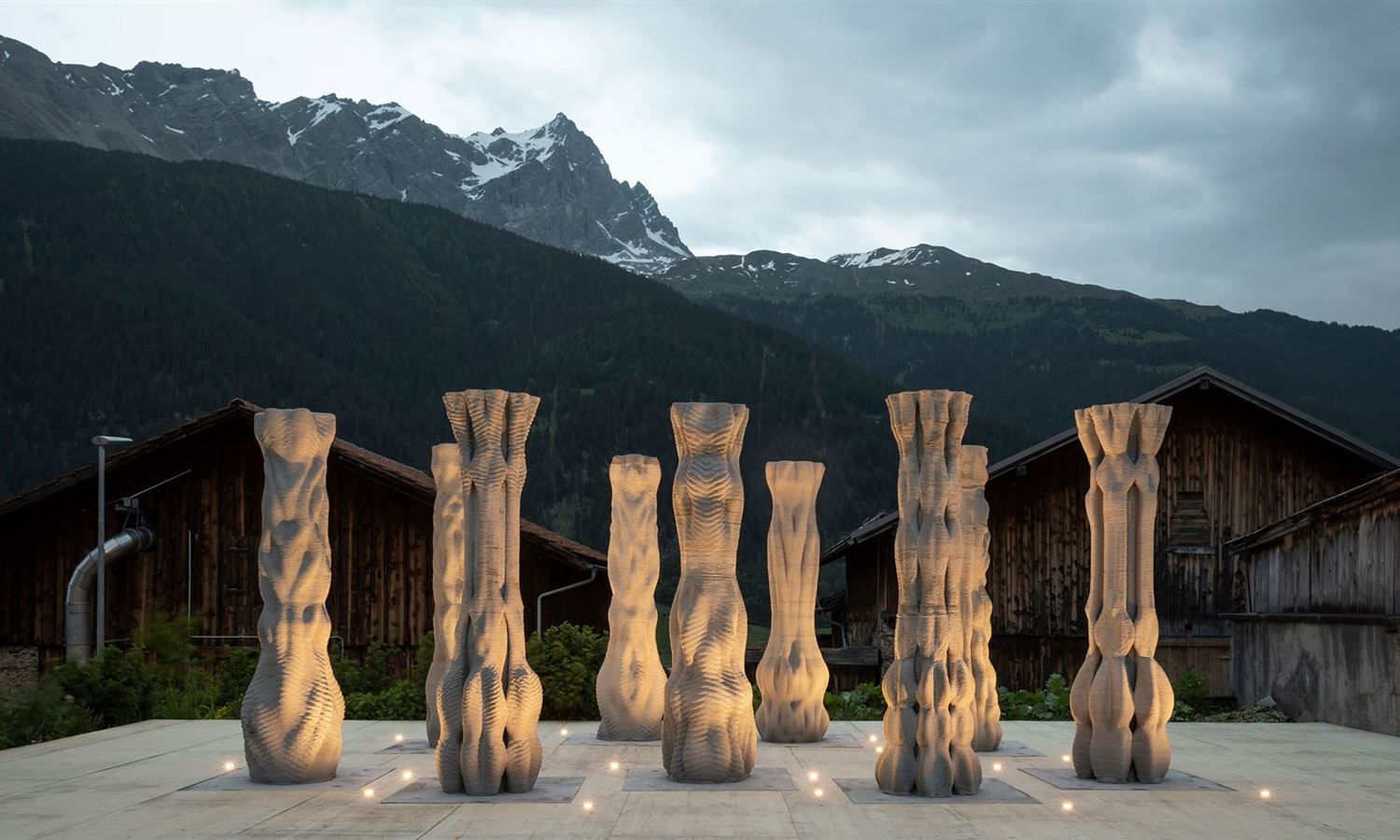The masters students produced the columns using a new process, developed at the technology school, that allows for the fast 3D-printing of concrete structures completely without formwork or any other kind of mould.
Titled Concrete Choreography, the series of structures took less than two-and-a-half hours to print in the lab using an industrial robot arm that extrudes concrete in precise layers.
It also allows for completely bespoke designs, incorporating complex patterns that are only achievable through high-resolution 3D-printing, the layers of concrete the robot places down are just five millimeters thick.
For Concrete Choreography, the students aimed to create fluid-looking forms that showcased the idiosyncrasies of both the material and the process.
Their work extended to the inner structure of the columns, which had to add strength with minimal material.
